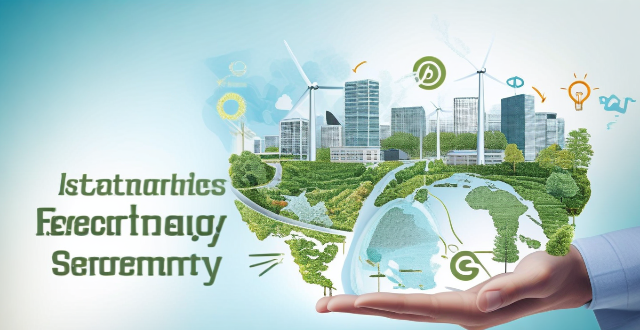The text discusses the various main sources of sustainable energy, including solar energy, wind energy, hydropower, geothermal energy, bioenergy, tidal and wave energy, and hydrogen energy. It also highlights the importance of adopting sustainable energy for environmental impact, economic benefits, energy security, and health considerations. The transition to sustainable energy requires investment, policy support, and technological innovation.

Main Sources of Sustainable Energy
Sustainable energy refers to any source of energy that is replenished by natural processes at a rate equal to or faster than the rate at which it is consumed. It is an essential part of our effort to reduce the impact of human activities on the environment and mitigate climate change. Here are some of the main sources of sustainable energy:
Solar Energy
- Photovoltaic Cells: Convert sunlight directly into electricity using semiconductor materials.
- Solar Thermal Power: Utilize mirrors to concentrate solar energy, heating a fluid to produce steam and drive turbines.
- Passive Solar Design: Incorporates architectural elements like windows and materials to naturally heat spaces and reduce energy needs.
Wind Energy
- Onshore Wind Turbines: Installed on land, these turbines capture kinetic energy from wind currents.
- Offshore Wind Farms: Located in bodies of water, often with higher and more consistent wind speeds than on land.
Hydropower
- Dam-based Hydroelectric Power: Uses the potential energy of dammed water to spin turbines and generate electricity.
- Run-of-river Systems: Harness the kinetic energy of river flow without the need for large reservoirs.
Geothermal Energy
- Geothermal Heat Pumps: Use the Earth's constant temperature to heat and cool buildings.
- Geothermal Power Plants: Generate electricity from steam produced by hot underground water and rocks.
Bioenergy
- Biomass Combustion: Burning organic matter like wood waste or crops to produce heat or electricity.
- Biofuels: Liquid fuels like ethanol or biodiesel made from plant materials or waste oils.
- Anaerobic Digestion: Breaking down organic matter in the absence of oxygen to produce biogas, which can be used for energy.
Tidal and Wave Energy
- Tidal Power: Captures energy from the rise and fall of ocean tides.
- Wave Energy: Harnesses the kinetic energy of ocean waves to generate electricity.
Hydrogen Energy
- Electrolysis: Using electricity to split water into hydrogen and oxygen; the hydrogen can be used as a clean-burning fuel.
- Fuel Cells: Devices that convert hydrogen into electricity with only water vapor as a byproduct.
Importance of Sustainable Energy Adoption
Adopting sustainable energy sources is crucial for several reasons:
- Environmental Impact: Reducing greenhouse gas emissions and mitigating climate change.
- Economic Benefits: Lowering reliance on imported fossil fuels and creating local jobs in renewable energy sectors.
- Energy Security: Ensuring a stable supply of energy that is not subject to geopolitical risks associated with fossil fuels.
- Health Considerations: Improving air quality and reducing health issues related to pollution from fossil fuel combustion.
The transition to sustainable energy is a complex process that requires significant investment, policy support, and technological innovation. However, the benefits to our planet and future generations make it an imperative endeavor.